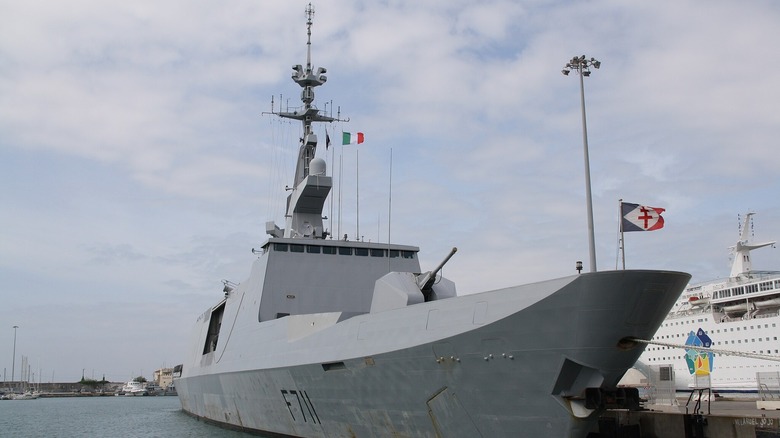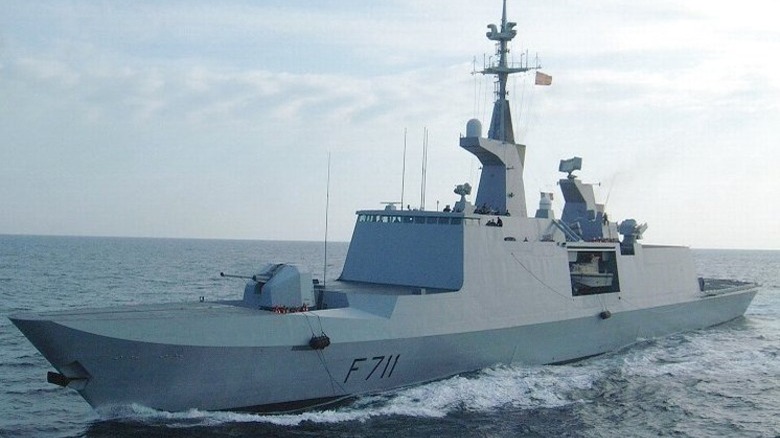FS Surcouf: The History Behind The French Frigate Warship
The warship FS Surcouf currently sailing for the French Navy is the latest in a series of five vessels of the same name, including a submarine that sank under mysterious circumstances in the Caribbean during World War II. The modern Surcouf is the only ship in the French Navy allowed to fly the "Free French" flag (created during WWII) in honor of the submarine Surcouf's tragedy.
Part of the La Fayette class of general-purpose frigates, Surcouf's keel was laid at Lorient Naval Dockyard in 1992 and the vessel was commissioned in mid-1996. While ships in this class are equipped with weapons, the most prominent feature is a large helicopter hanger and landing pad at the stern, designed to accommodate heavy aircraft such as the massive, three-engined SA321 Super Frelon, once the world's fastest helicopter .
Maritime buffs will note that the Surcouf's superstructure — the part of the vessel rising above its hull — is angled inward. That innovative design is known as tumblehome and has several benefits. First, it lowers a ship's center of gravity, which enhances the natural tendency for a vessel to right itself. That equates to better handling in rough seas. But perhaps more importantly, it makes a vessel more difficult to detect by radar, leading to the nickname "stealth frigates.". Further reducing the Surcouf's radar signature is a partial wood and fiberglass composite construction, rather than conventional steel.
[Featured image by Piergiuliano Chesi via Wikimedia Commons | Cropped and scaled | CC BY 3.0]
Surcouf saw more humanitarian efforts than outright combat
It wasn't very long after entering service that a mission presented itself to Surcouf in 1997's Operation Antilope [sic], which evacuated approximately 80 French and other nationals from the Congo by helicopter. This was followed by providing support to 6,000 French troops participating in Operation Trident in Kosovo in 1999 and an undisclosed role in Mission Khor Anga in the Djibouti zone of Africa.
Besides humanitarian operations and low-intensity conflicts, Surcouf also has several high-profile sea rescues to its credit. In 2001, a sailing crew of five was airlifted from their sinking catamaran and in 2004, a 16-person crew was extracted from a Panamanian cargo ship that ran aground near Yemen.
Presently, the warship Surcouf is awaiting some mild modernization that will befit her newly assigned offshore patrol duties that will last until the ship is eventually retired in approximately 2027. With reduced military capabilities required for her upcoming mission, the Surcouf's aging Crotale surface-to-air missile system is being removed from the vessel.
[Featured image by Franck Dubey via Wikimedia Commons | Cropped and scaled | CC BY-SA 3.0]

